‘Attempting’ and ‘style‘ being the salients word here! Nope, not any kind of expert on this subject either but the style and simplicity of fine art photography is greatly appealing to me, and by explaining why we may consider some important aspects of making compelling images.
I have not often taken photographs with a view to immediately rendering them as fine art, so for this article I have taken some landscape images from my archives and tried to apply (what I think is) a ‘fine art’ look in Lightroom. The scenes presented here are from my travels to Iceland, Norway, Alaska, Bulgaria and Wales, each of which has many of Earth’s beautiful landscapes.
So, what is fine art photography? Well, definitions vary, but I think it is essentially photography that is an artistic interpretation of the photographer’s vision. That is to say that how the image is represented takes precedence over what is represented; the artistic interpretation is given more weight than a simple visual account of a specific subject. Others have simplified the description as just a photograph that is destined for someone’s wall! Like any other form of art it is open to subjective interpretation (and is therefore undoubtedly controversial), but an online search of the term ‘fine art photography’ returns an enormous variety of images.
With respect to landscapes and places, the images may be in colour, but are often in black and white; stripping away the colour deconstructs the image into its constituent elements, such as light and texture, which become like brush strokes in a work of art. The result is intended to convey how you feel, or were made to feel, about your subject.
In a sense, this simplification makes it easier for the photographer, as we only have to consider three components of the image: the lighting, the composition and the subject. The difficulty comes in making each of those elements as potent as possible to make the image as a whole striking.
(This image, taken near City Hall in London, is wholly unoriginal but it may illustrate the point.)
But it can encourage us to look at our scene in terms of these main elements, de-cluttering our perspective into the basic tenets of effective composition. While we may marvel at the actual beauty of a landscape, we might consider if the lighting and textures lend themselves to a more profound or abstract interpretation of it. Rather than worrying about capturing the entire vista, interesting lighting and textures can draw us to individual details, and thus create images from a scene that we may not have immediately considered otherwise.
For the attempts with my images, I used the black and white tab in the Basic panel in Lightroom and adjusted the exposure parameters to deepen the blacks and add more contrast. The B&W tab in the HSL/Color/B&W panel below is automatically activated, and by moving the individual colour sliders, I was able to achieve a more selective contrast.
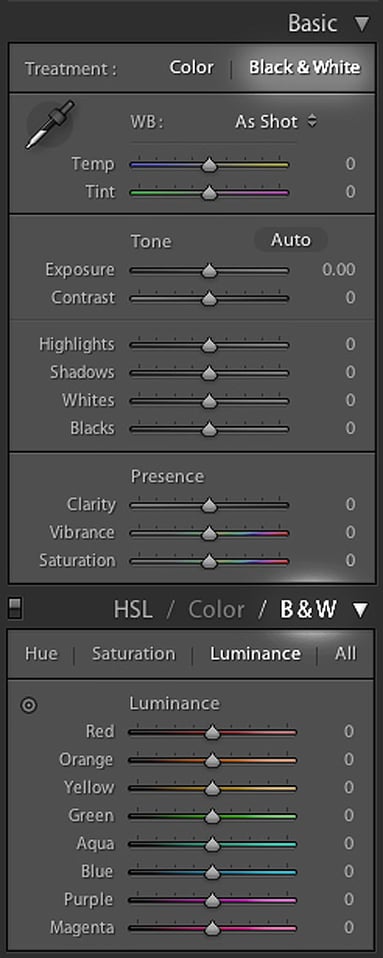
Increasing the saturation levels in the Basic panel before hitting the black and white tab will also impact the effect that moving the sliders will have. Be careful not to move the sliders in the HSL/Color/B&W panel to extremes or artifacts and halos will appear. Finally, I applied some selective dodging and burning to the images, in order that the light itself leads the eye into the scene.
There are, of course, many other ways of processing the image, e.g. using gradient maps in Photoshop, but for now this Lightroom method works for me. Some people use filters and dedicated software to render black and white, but in those cases you are reliant on the software’s algorithms instead of your own judgement. I think perhaps in some cases I have left too many details of the scene intact to qualify as fine art, but this is entirely subjective. Not all fine art landscapes have to be a black jetty on still water from a 300 second exposure. (The line between artistic photography and capture photography can be blurred. Picasso once said, “I have discovered photography. Now I can kill myself. I have nothing else to learn.”)
Of course, fine art is not restricted to landscapes. Portraits, nature, nudes and wildlife can all fall under its remit. I even attempted the processing on some photos of deer, as seen below. (By the way, these are ‘wild’ deer in London’s largest Royal Park, Richmond Park, introduced by King Charles 1 and have roamed freely since 1529. I realise they don’t compare to the truly wild gazelles and antelopes of Africa, but they were photographed from a distance and are rarely, if ever, interfered with by humans. But if you still take issue with that then please consult our excellent monarchy for comment.)
Lastly, fine art can also convey the beauty and simplicity of small details, individual textures or even a creative blur. While some photographers will create a scene from their own imagination to tell a story or express an emotion, others will seek a minimalist effect, creating art in their image with a simple juxtaposition of black and white shapes, or light and shade.
In any event, it adds yet another dimension to photography for me, stimulating my imagination and giving me food for thought. Perhaps my attempts at rendering my images here in a ‘fine art’ style were not successful or effective in your eyes (you may simply argue that they are just B+W conversions), but for me they at least encourage me to think differently the next time I photograph something. And after all, isn’t that how we improve?
Thank you for reading. You can see more of my attempts here.
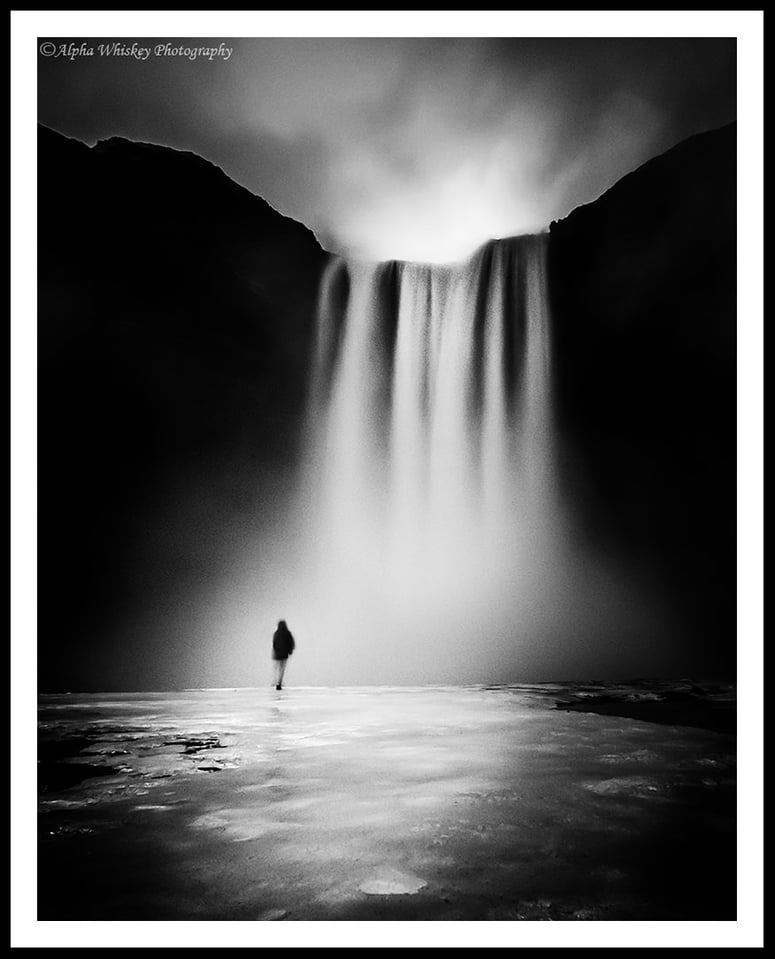



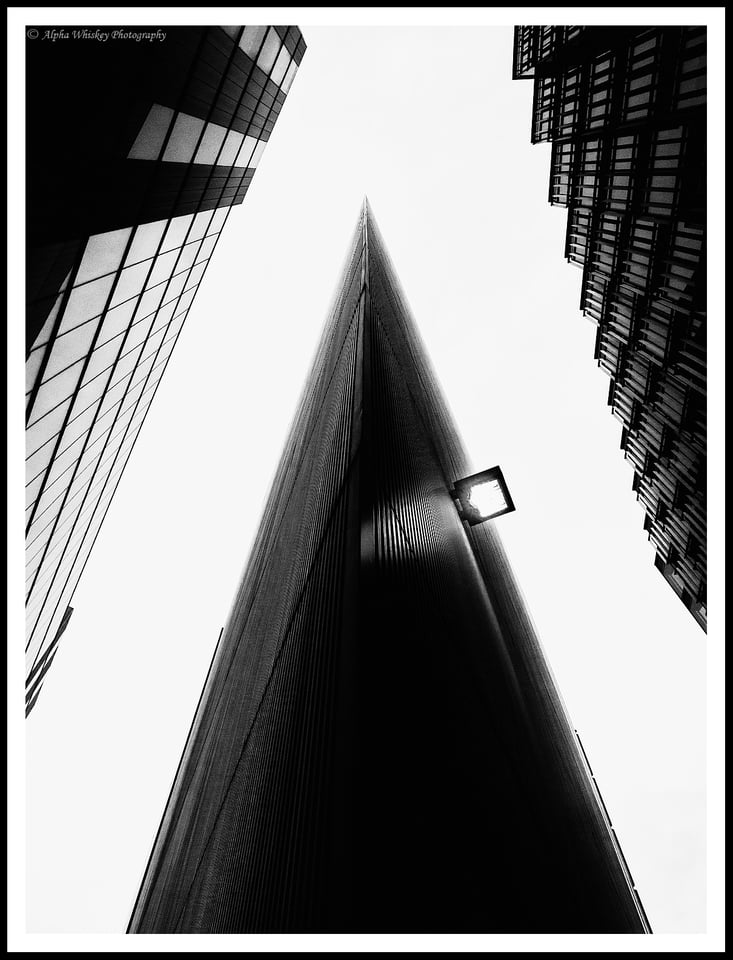
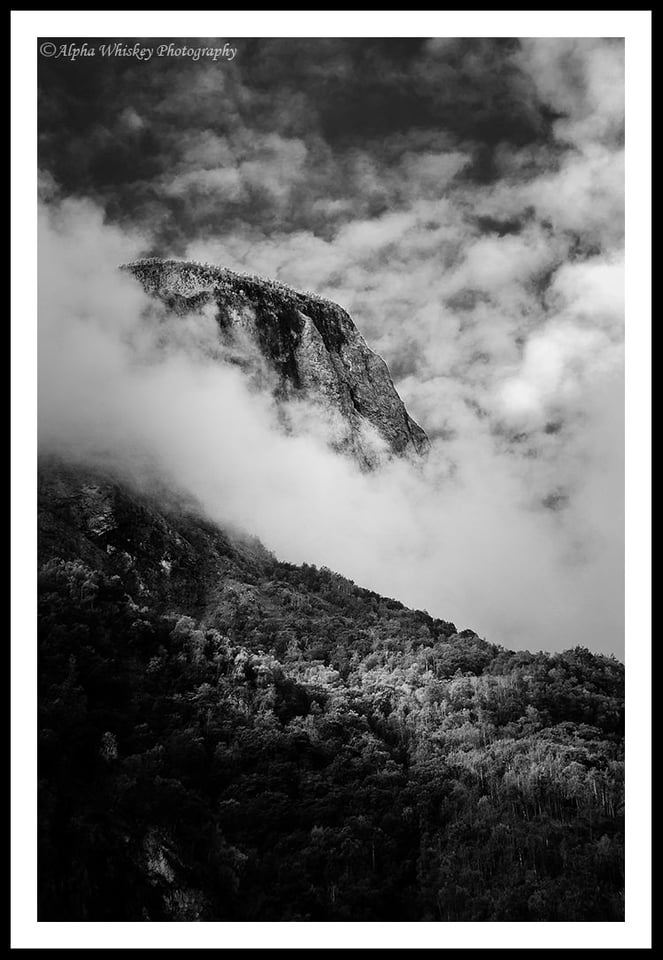
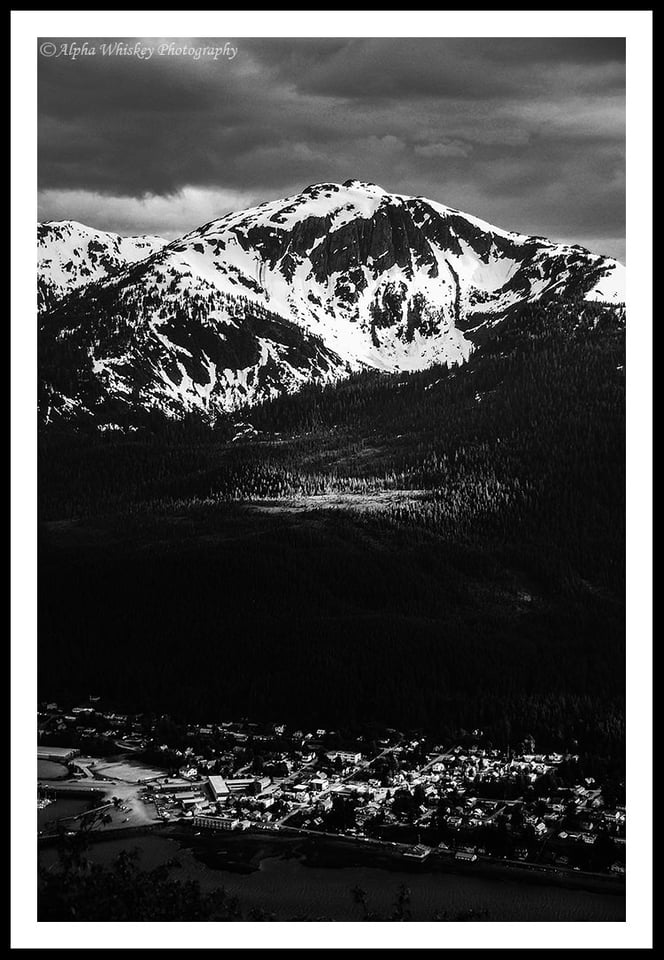





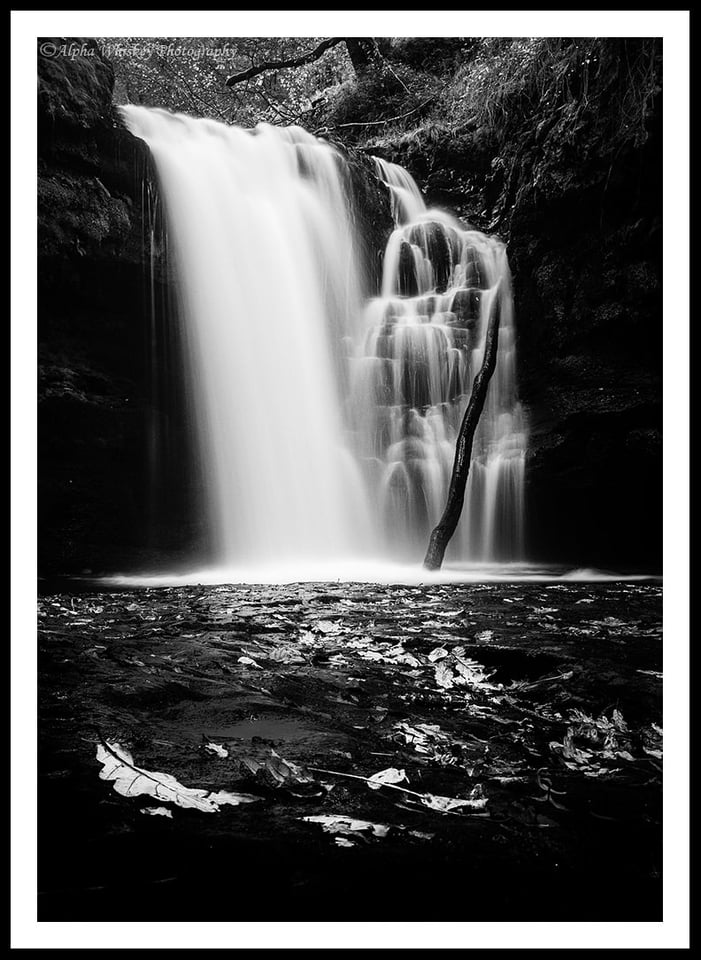

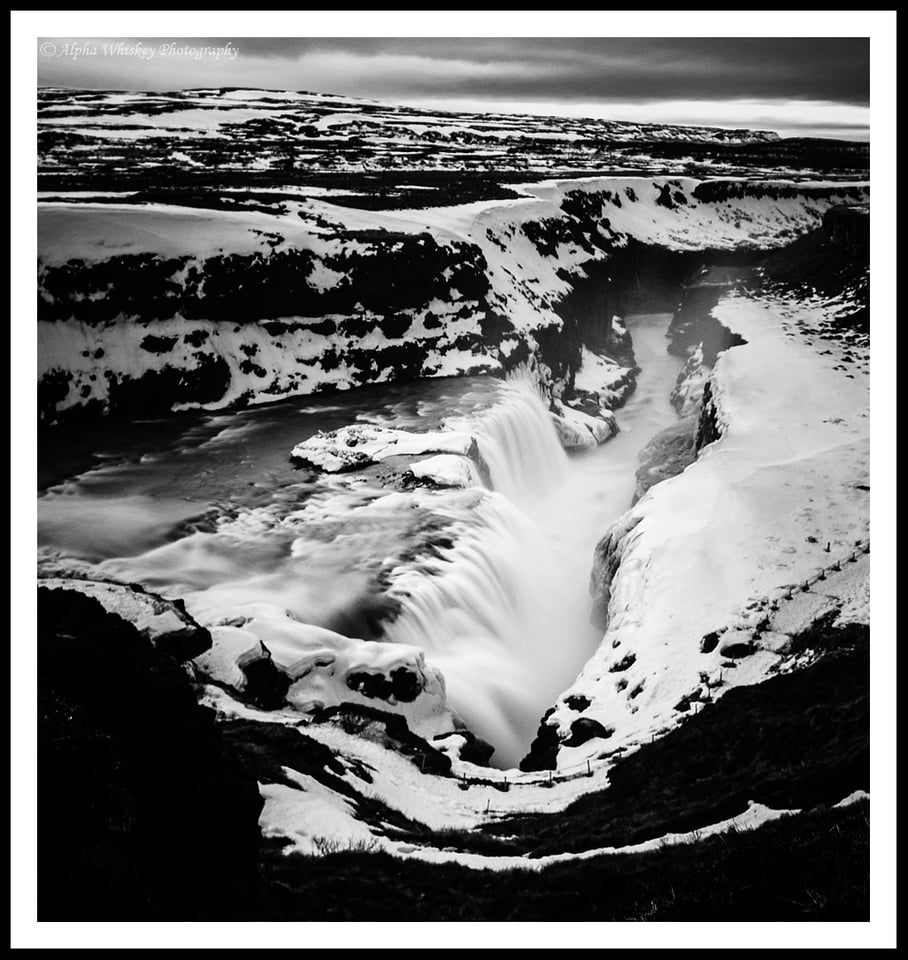


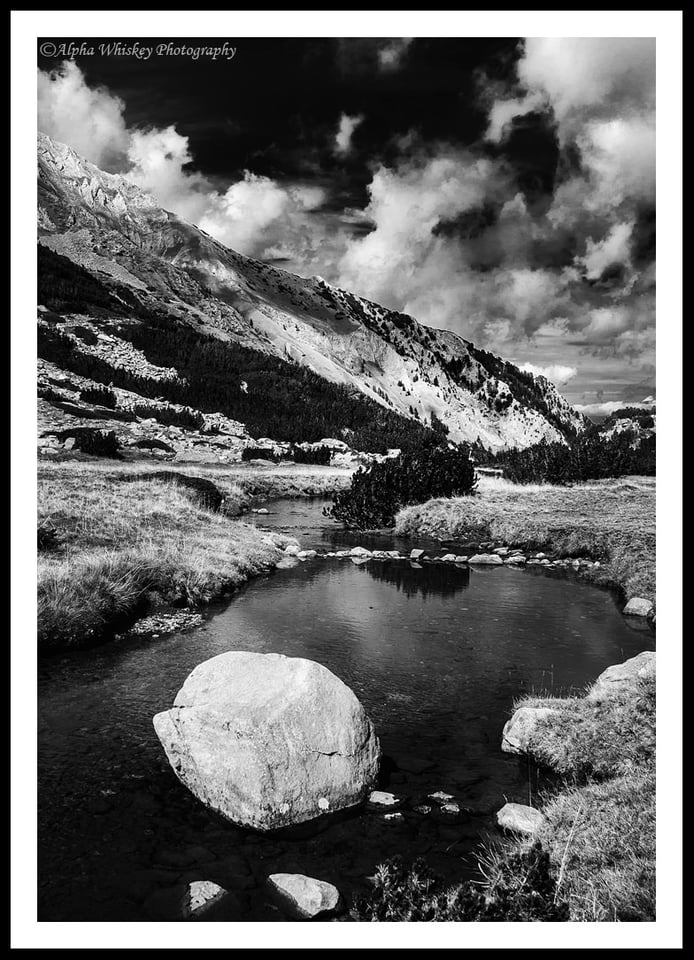
your photos are beautiful. how did you do the one with the deer?
Thank you Camy.
The original deer shots were taken at sunset with a golden light upon them. I desaturated the images, used a brush to blacken the surroundings and then applied a selective contrast and colour sliders as described in the text to accentuate them.
I think your images are gorgeous but I have a different take on what fine art photography is, the one I work from. To me ‘art’ means an artist has given thought to how a body of work can illustrate a thought/feeling/idea/emotion.
Those of my projects I call art are always series of images accompanied by an artist statement where I describe what it is I want to convey and what my thoughts are behind the work. I never work in black and white and I’m lousy at shooting landscapes :-)
Karinottportfolio.com
Dear Karin,
Thank you for your comment. It’s always intriguing to hear and learn about a different take/perspective on something. That’s what makes art and photography so fascinating!
Regards,
Sharif.
I just realize that I should not have left the portfolio link It’s really not that interesting in this context but I can’t edit my comment at this point. What I should have left a link to is lenscratch.com. it is an amazing resource that features a fine art photographer every single day. A must for people interested in art photography.
Alpha Whiskey:”…the style and simplicity of fine art photography is greatly appealing to me…”
Yes, and it shows, extremely well. I love your images. The first deer shot is fantastically evocative, all the better for it braying and exhibiting its animalism flashing stone-like out of the darkness. Utterly brilliant!
The landscapes are equally evocative, as they should be. Anyone with a camera can photograph a nice landscape, but will the result make the viewer want to step into it? Will the viewer feel something of the photographer’s reasoning for taking the shot? Aye, that is the rub. You achieve it in spades, and I am envious.
Thank you Glenn! I appreciate the kind feedback :)
Lovely photos and I enjoyed the article very much too — I like when an article makes my brain work.
Thank you Joni! :)
Super stuff.
Small thing, but a good chance you already know it. In LR the B & W button is connected to a preset in the preferences:
Preferences – Presets – Apply auto mix when first converting to black and white.
When it is on (the default) LR does the black and white and change your colors.
When it is off, the Black & White Mix remains zero, but you can always use the – auto – button.
In the HSL color tab, I set the saturation of all the colors on – 0 (zero)- and have more possibilities now.
Thanks Ton,
Very useful tip there, thank you kindly! :)
They are truly fantastic. I have tried my own after I read your article and was so surprised to compare mine and yours. The purity of white or highlight tone is so good and mine looked still grey. Can you give some tips to creat such great pure tonality.
Hello mtakeda. Try altering the percentage of the dodge/burn when you use it, say start at 30% and then go over it if it’s not enough. Dodging highlights will make the white areas brighter, but be careful as they can easily get washed out. Also, deepen the black maybe to increase contrast. And use the clarity slider to improve the fine details (not too much tho!) and reduce the highlight slider in LR under the basic panel to recover detail. Hope this help! :)
Dear Sharif,
Thank you much for your response. Am I correct to assume you mean the white slider and the black slider by dodging and burning? Then do fine tuning by moving sliders in HSL/Color/B&W? Please clarify.
Based on above I got much cleaner tone although it is not quite upto yours. And I have now another issue which is my printer does not reflect the tone in the monitor even though I have done the calibrations. Please comment if you will.
Thank you for your help.
Hi there,
I usually move the Highlight slider in the Basic panel to the left to recover as much detail in the highlights, then try moving the white point slider to the right and black point slider to the left to improve contrast. There is also a curves graph underneath where you can selectively adjust light and shadow areas too.
Here is a tutorial on dodging and burning in Lightroom. (the examples are in colour but it will apply to B+W too)
photographylife.com/dodgi…-lightroom
Hope this helps! :)
Thank you very much. You gave me another objective of excitement in my hobby.
As always a wonderful article sharif. Your pieces are
So easy to read. Few words and a lot of pictures. I have a question to ask. Do you sell these pictures? Or do you simply share them with friends for fun and critical analysis? Do you use these to teach about photography?
I will use your advice to figure out what to do with my photos. I plan to have my best ones framed and keep them in a separate room like painters keep their paintings.
Hi Muhammad.
Thank you. I sometimes sell pictures, but I mostly make a lot of photo books and calendars (at Xmas) as gifts for people. It’s always a very nice and uncomplicated gift idea! Also, I’m always adding photo from my excursions to my blog.
I would definitely advise you to print and frame your best photos. It’s a good way to showcase your work. Better than having it sitting on your hard drive! :)
Hello Sharif,
Another great article and terrific photos. I am definitely going to play around with the Black & White tab in Lightroom. Your articles (all three that I have read so far) are very inspiring and encourages amateurs like myself to strive for better. Thank you very much for sharing!
Best,
Debbie
P.S. Next time you are in Florida, come for north to Paynes Prairie. They have a variety of wildlife and several nature trails. The La Chua trail is especially noted for viewing alligators :-) Take care!
Hi Debbie,
Thank you so much. I am genuinely gratified that you found my articles helpful. I may just take you up on that invitation to Florida and maybe you can be a guide for this hapless soul! :)
Warm Regards,
Sharif.
Anytime Sharif! Just let me know when you are coming :-) In fact, I am heading there tomorrow to put some of the advice from your first article “Challenging Yourself to Improve” in motion…
Best,
Debbie
Excellent, Debbie, thank you! Get some great shots tomorrow and feel free to send some to me! :))
As in all forms of art it is subjective. One Man’s Picasso is another man’s velvet painting of Dogs playing cards :).
Alpha I appreciate the article and I also appreciate the struggle the article presents for yourself since it can be controversial.
I do like your definition. The problem and struggle becomes that Fine Art Black and White has be come as you say a “Style” I’ll call a “look” so when something becomes a look and is even taught “to be done this way” as I have seen in people teaching “Fine Art Black & White”… but the point at which it becomes a look, it is no longer the “Artist’s interpretation but rather the group as a whole. When that happens it really is therefore no longer Fine Art. If it means that everyone does a High Angle, architectural, long exposure, edited forgetting that there are midtones in “Black & White”… then it is only a look and nothing more. When someone decides to step out and truly do an Artist’s Vision…I will then be impressed. Again I understand your struggle in writing this and I appreciate your article about it
Hi Peter.
Actually, you make a very interesting point which I admit I had not considered for this article. I suppose true art is arguably an original interpretation and perspective, rather than the imitation of a certain look or style. I am guilty of falling into that latter definition rather than the former. I think I was trying to use the ‘look’ to help deconstruct the elements of image construction rather than promote something truly original. :)
But you have given me something to think about, so thank you for that :)
Regards,
Sharif.
Thanks for replying, I didn’t want to make it seem like I was coming down hard on the article, I liked the article and your photography and in the end it makes for very good discussion and thoughts as we have had, so, much appreciated :)
Not at all, Peter :)
You’re perfectly entitled to offer whatever feedback or criticism you deem fit. Since I put the article out there for public consumption I am perfectly happy to receive whatever feedback comes my way, good or bad. And I’m very receptive to intelligent thoughts such as yours. :)